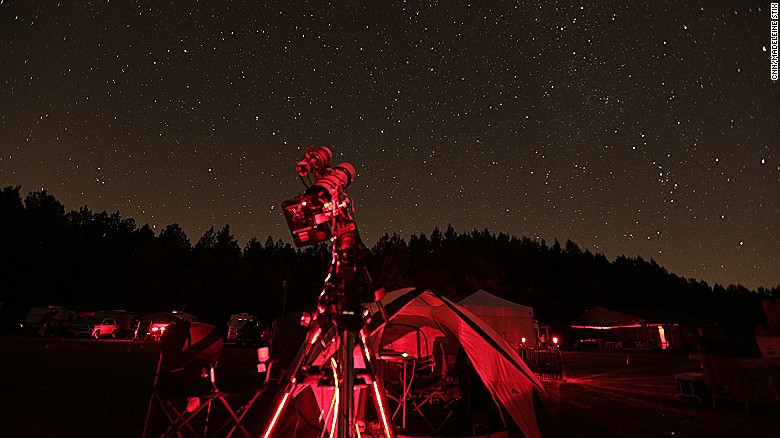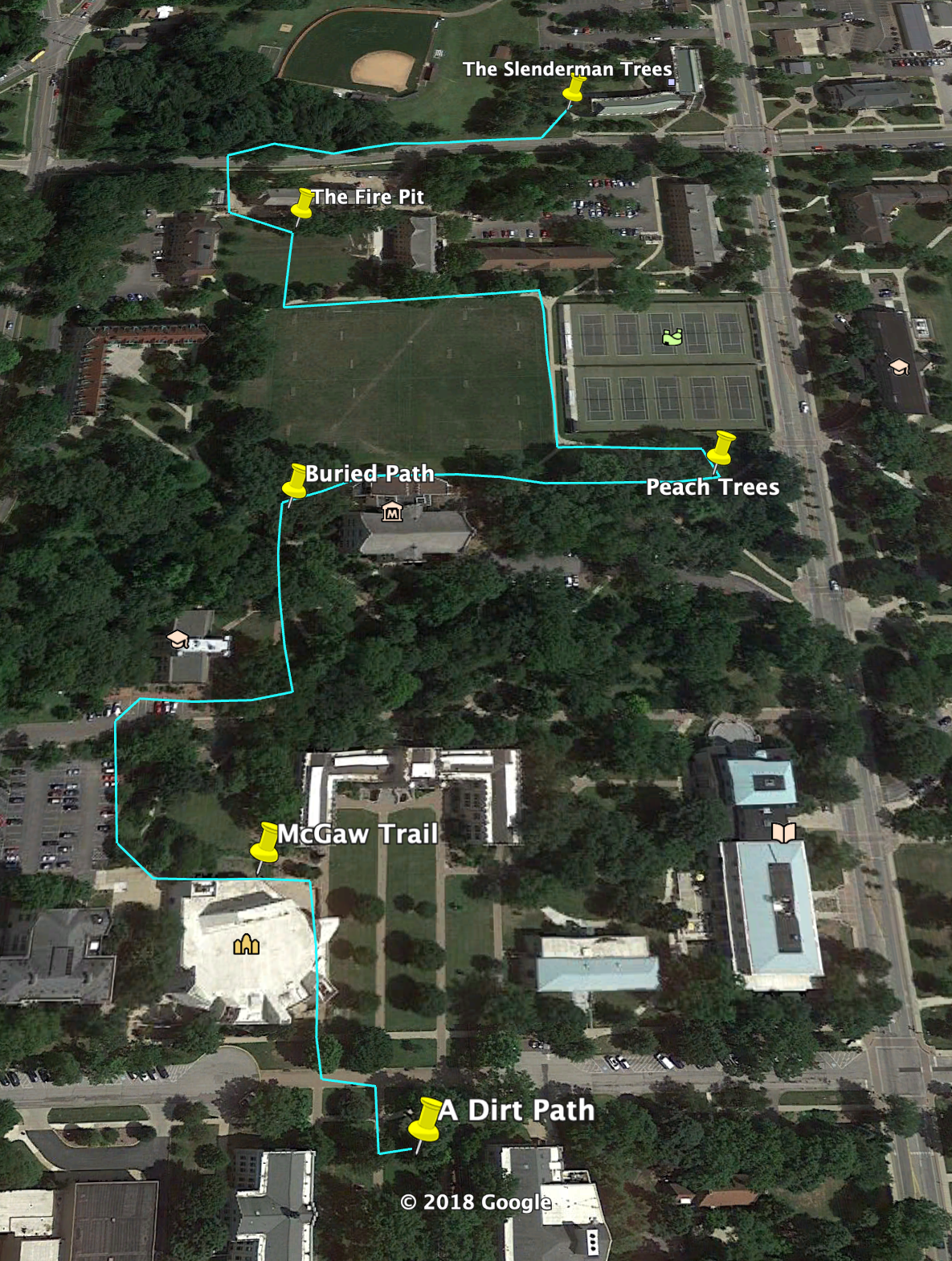Welcome to the residential quad. Every dorm on campus has some kind of quad or lawn, but this last year Stevenson got a fire pit put in their quad. As you can see it’s a concrete structure with columns that surround it, but provide no shelter from the rain. The purpose of this area is unknown to me. I’ve heard of people grilling on campus, but I’ve never seen anyone actually do it. Even if I wanted to, where would I store the charcoal? In my room? Where I can’t even keep an extension cord because it’s a fire hazard? I don’t think I’ve even seen anyone sit here who wasn’t taking a call outside to get away from their annoyed roommate. It’s built like we’re supposed to gather here, but why? And could we not gather here when it was a lawn? Why the cement floor? Why the columns? Why did we need this to take up space that used to be a perfectly serviceable lawn?
Let’s imagine for a second that it’s dark. Maybe it is dark when you’re reading this. Maybe you decided to come here at night. Good for you. But regardless of what time of day you’re here at, there are millions of stars above you that you can not see. And why is that? Right next to this cement patch they installed the brightest lights known to man. There’s no wonder why every room on campus is supplied blackout shades. How else would we get to sleep with these damn lights shining right outside our windows?
The lights are safety precaution. Campus has to be lit so you don’t trip in the dark or get scared by something or someone moving right behind you…just out of sight. Outside lights have been shown to be beneficial by increasing people’s ability to use public transit and allowing people to move more safely at night and thus stay out later, work more, spend more.
Recently we’ve seen the campus switching from orange lights to white lights. For those of you who don’t know, that old orange light is produced by Sodium lamps which used to be the cheapest option for illuminating the dark streets. Now with the advent of LED’s, which are more efficient and last longer, many places are phasing out old muted orange Sodium lamps with bright white LED’s. And if you hate those white LED’s, you’re not alone. Their blue-tinged light disrupts sleep, blinds drivers, and ruins your night vision. They can actually make areas less safe by being too bright. Which is why many areas have regulations dictating how hot they can be and how you can install them as to keep them out of driver’s eyes and out of people’s windows.
If you’re an astronomer, you probably already know this, but blue light is the devil. Astronomers who need to see their equipment will use red lamps because red light (being a longer wavelength light) does not disrupt night vision and thus allows you to see your equipment and the stars better. LED’s blue tinted light completely destroys your night vision, meaning that anywhere that is not lit is actually harder to see.

So why does this matter? You’re probably not an astronomer, and if you’ve had any interaction with the astronomy club you’ll know that the light pollution in Wooster–like all suburban areas–makes making any noteworthy finds pretty much impossible. You’ve probably not thought twice about the street lights on every inch of campus, in fact you probably like them. You’ve probably, like me, seen the little flakes of fresh snow falling down into the cone of light and thought dreamily of Mr. Tumnus at the entrance of Narnia in the land that is forever winter and never Christmas. Or you may be vaguely annoyed by them, but think “What’s the alternative? Walking home in the dark? No thank you.” Thoreau said in the chapter “Solitude:”
“At night there was never a traveller passed my house…they soon retreated, usually with light baskets, and left ‘the world to darkness and to me,’ and the black kernel of the night was never profaned by any human neighborhood. I believe that men are generally still a little afraid of the dark, though the witches are all hung, and Christianity and candles have been introduced.”
We hate darkness. We hate being caught out in the darkness. Even if we live in a relatively safe place like Wooster. While I don’t disagree that a primarily pedestrian trafficked area like a college campus should be well lit (in fact I highly encourage it) I can’t help but to notice that it is in our fear of the dark we have erected a new boundary between us and nature. Our lights have blotted out the stars!
This firepit was supposed to encourage us to come outside and get some of that good good nature that Thoreau talks about. But Wooster has built us an outdoor seating area, that has a cement floor, no rain shelter, and no visibility of the stars. It’s this area that seems to tease that it’s meant to be a night time hangout spot–with the fire pit–but without a fire, without a night sky, and without a shelter, it becomes effectively useless in that purpose.
Inside is temperature controlled, dry, and away from mosquitos. Why even go outside at all?
Sources:
Wheeler, Brian. “LED street lights are disturbing my sleep.” BBC News, 2017, bbc.com/news/magazine-38526254. Accessed 20 Oct. 2019.
Stevens, Richard G.. “Doctors issue warning about LED streetlights.” CNN, 2016, https://www.cnn.com/2016/06/21/health/led-streetlights-ama/index.html. Accessed 20 Oct. 2019.
